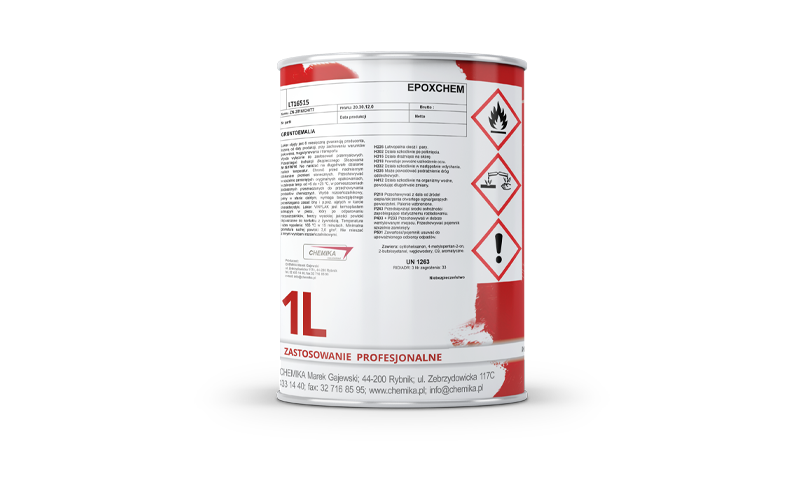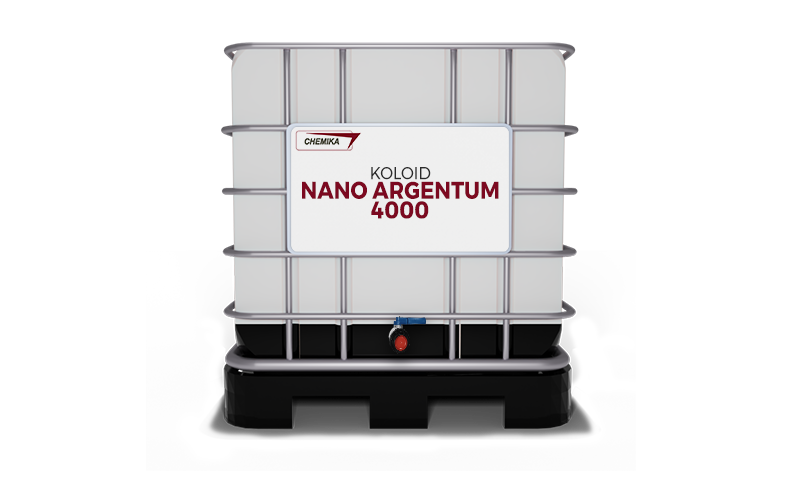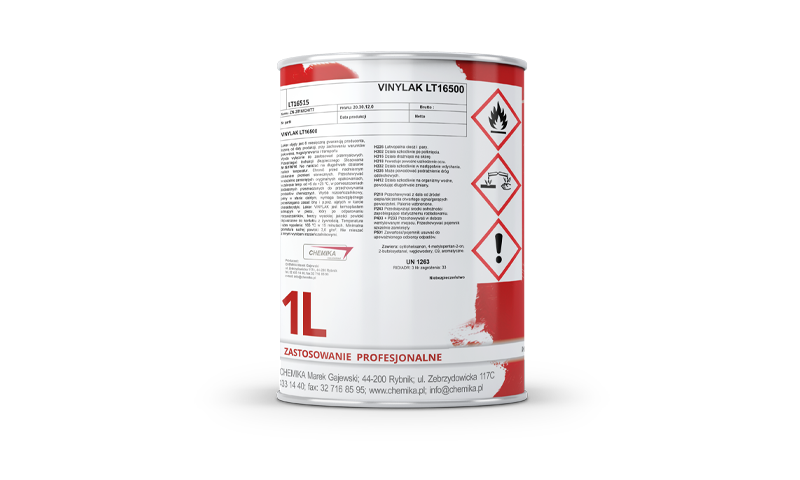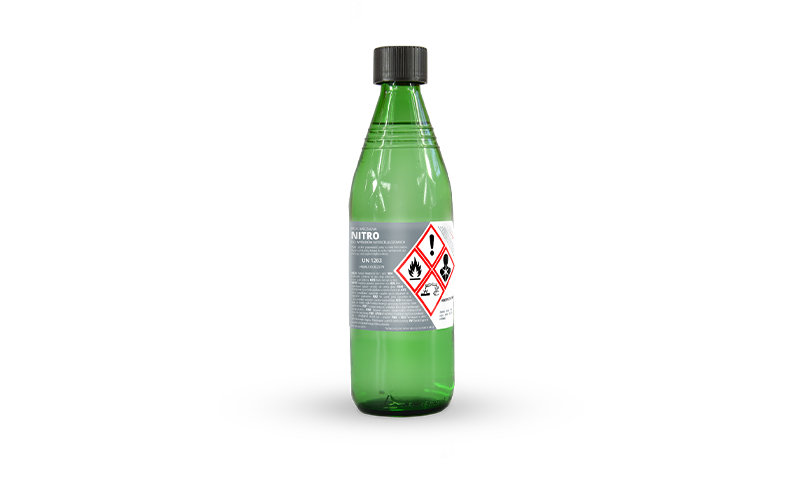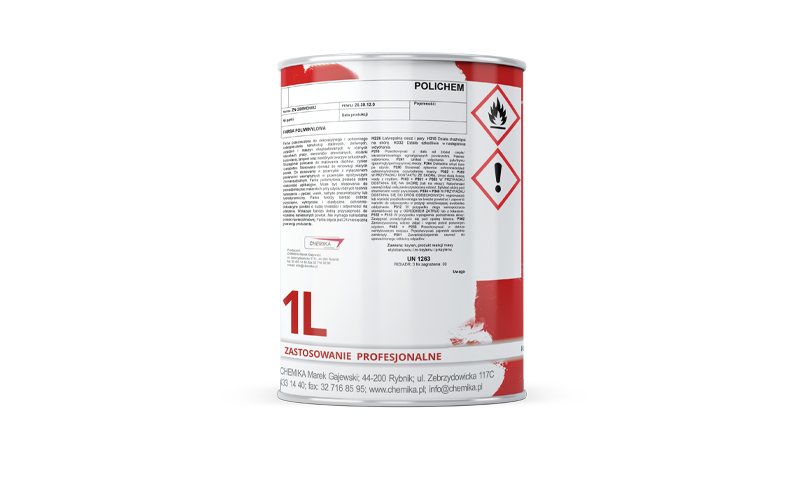Characteristics:
A suspension of pigments and mineral fillers in an epoxy resin solution in organic solvents with the addition of auxiliary agents. EPOXCHEM is a two-component epoxy primer enamel based on epoxy resin and a hardener made from dimerized fatty acids and polyamines.
Product properties:
EPOXCHEM has good application properties for painting work using various application techniques – brush, roller, spray. EPOXCHEM creates very well-adhering, durable, and flexible protective coatings with high durability and resistance to impact and abrasion. It features excellent coverage and very good adhesion to previously applied coatings. The resulting coatings are smooth and resistant to changing weather conditions. Additionally, they have high resistance to water, mineral and vegetable oils, greases, turpentine, kerosene, aliphatic petroleum derivatives, and some chemicals.
Intended use:
EPOXCHEM is intended for use as a primer and topcoat, as well as for applications with PURCHEM polyurethane paints and enamels. It is designed for protecting steel, cast iron, other metal components, and certain plastics used in various operating conditions. The primer enamel is used for protective painting of equipment, machines, devices, and constructions made of steel and iron, where excellent resistance properties, flexibility, and good adhesion are essential. The paint can also be used for the renovation of old, well-adhering coatings, where no sub-coating corrosion occurs.
Application method:
Before starting work with the product, familiarize yourself with the safety data sheet for the epoxy primer paint EPOXCHEM and the hardener EPOXCHEM. The product is flammable and requires strict adherence to health and safety and fire regulations during use. Before starting, ensure that the amount of component A – base and component B – hardener is sufficient to prepare the working mixture in the correct ratio (5:1 by weight). Using a different ratio will result in a mixture that cannot form a coating with the desired parameters. Remove any contamination from the substrate that may negatively affect the painting process. The surface to be painted should be clean and dry. Steel surfaces should be cleaned to a cleanliness level of Sa 21/2, removing rust and scale. Zinc and aluminum surfaces should be roughened. Surfaces where the maximum time for applying the next layer has passed should also be roughened to improve adhesion. Prepare only the amount of primer enamel that can be used within the mixture's working life. The components should be thoroughly mixed in the entire volume of the container just before use, maintaining the correct proportion of base and hardener. Mechanical mixing with low-speed hand mixers is recommended. Inadequate mixing or incorrect proportions of the components will lead to improper curing and a coating with impaired properties. The temperature of the mixture should not be lower than 10 °C. Lower temperatures cause a significant increase in viscosity, making it difficult to properly mix the components and extending the preparation time. The product should be well mixed and, if necessary, thinned with EPOXCHEM epoxy thinner to achieve the required working viscosity, depending on the chosen application method – brush, roller, pneumatic spray, or hydrodynamic spray. The thinner should be added after mixing the base and hardener. Do not use universal thinners as they may contain components that react with the hardener. The usability of the mixed components depends on the working viscosity of the prepared mixture and the humidity and temperature conditions during the application. The application time decreases as the viscosity of the mixture and temperature increase. The EPOXCHEM hardener reacts with water and is susceptible to moisture. Hardener containers should be closed immediately after use. Moisture also negatively affects the mixed base and hardener, so the painted surface and compressed air used for spraying must be absolutely dry. The minimum temperature of the painted surface should not be lower than +5 °C and at least 3 °C higher than the dew point. Painting should be done when the painted surface temperature is no higher than 40 °C. The relative humidity of the air during painting and drying should not exceed 80%. It is recommended to apply up to 2 layers. The wet film thickness should not exceed 125 µm. For the specified film thickness, the theoretical coverage is approximately 10 m²/l. The actual consumption depends on the chosen application technique, the type of surface, spray losses, etc. Many paint properties may change if too thick a layer is applied. It is recommended that the product not be applied in a layer thicker than twice the recommended film thickness. A thicker layer and increased humidity can slow down the drying process. The usability of the prepared mixture depends on the ambient temperature during application. With a working viscosity of 65-70 s, measured using a DIN 4 cup at 20 °C and relative humidity of 65%, the usability time is 16 hours. The maximum time for applying the next layer with the wet-on-wet method and the minimum with the wet-on-dry method depend on the thickness of the applied layer, relative humidity, and the temperature of the painted surface. Equipment and tools used for spraying should be cleaned immediately after use with a thinner.
Selected technical parameters:
| Density | mixture (A + B) max. 1.40 g/cm³ | |||||||
| Viscosity (DIN 4 flow cup) |
|
|||||||
| Mixing ratio by weight | base – 5 parts; hardener – 1 part | |||||||
| Mixing method | low-speed mixer | |||||||
| Coverage quality | Grade I – dark colors Grade II – light colors |
|||||||
| Gloss | matte, semi-matte, satin, gloss | |||||||
| Finish | smooth | |||||||
| Color | color palette | |||||||
| Thinning | after mixing base and hardener – epoxy product thinner | |||||||
| Cleaning tools | immediately after use with thinner | |||||||
| Volatile content | 25% by weight | |||||||
| Recommended minimum dry film thickness | 40÷50 μm (for 1 layer) | |||||||
| Recommended minimum wet film thickness | 100÷125 μm (for 1 layer) | |||||||
| Theoretical coverage | 10 m²/l for one 40 μm dry layer | |||||||
| Substrate temperature | not lower than 5°C, at least 3°C higher than the dew point, max. 40°C | |||||||
| Ambient temperature | not lower than 5°C (optimal above 10°C), max. 35°C |
|||||||
| Mixture temperature | min. 10°C, max. 35°C | |||||||
| Application methods | spray, brush, roller | |||||||
| Recommended number of layers depending on the desired thickness | 1÷2 | |||||||
| Coating drying time [at 20±2 ºC and relative humidity 55±5%] |
Grade I – 30 min Grade III – 23 h Grade VI – 24 h |
|||||||
| Time before applying the next layer at 20°C | min. 2 h for the wet-on-wet method, min. 24 h for the wet-on-dry method |
|||||||
| VOC content limit (category A/j/FR-500 g/l) Stage II | max. 490 g/l | |||||||
| Tested parameters may change depending on environmental conditions, layer thickness, and quantity. |
||||||||
| Applying a thicker coating layer and higher humidity than recommended may slow down the drying process. | ||||||||
Zakładowa norma Nr ZN-2011/CH/36.

